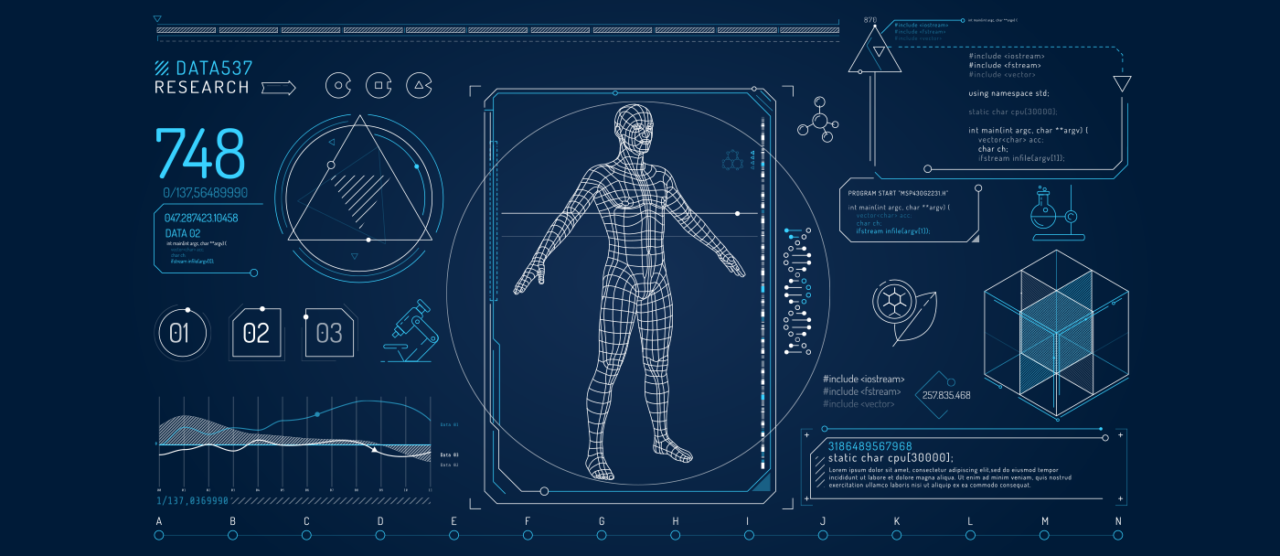Prostate cancer is a serious disease that affects nearly 13 out of every 100 American men. Take the time to learn about the risks and symptoms of this deadly condition. Ignoring prostate health can lead to even greater health complications. That is because age is the most common risk factor when it comes to prostate cancer. In other words, the older you are, the higher your chances of developing the disease. Beyond age, other risk factors include race and family history.
A PSA blood test catches early signs of prostate cancer. It can be completed in your primary care provider’s office or at a local lab within 15 minutes, just like any other blood test. You do not need to fast before a prostate cancer screening, but you may want to avoid biking or sexual activity within 24 hours of the test. Most major health insurances cover one annual prostate cancer screening. Always be on the lookout for symptoms such as urination trouble, bloody urine, frequent urination or pain in the pelvis region. The sooner prostate cancer is caught, the more treatable it is. Don’t forget to schedule your PSA with your PCP or health clinic this year!
Take action each week:
Men’s Health: Tips for a Healthy Life
The leading cause of death for males in the United States is heart disease—followed closely by cancer. Adhering to a healthy lifestyle can help you avoid becoming part of a statistic.
Watch What You Eat
What you eat and drink can make a significant difference in your overall health. Eating five or more servings of fruits and vegetables a day, little saturated fat and no trans fats can improve your health and reduce your risk of developing heart disease and other chronic diseases.
Know Your Risks
Your genetics, environment and lifestyle all contribute to your health. These factors may put you at an increased risk for developing certain diseases or conditions. Since you can’t change some of those factors (like your genes), focus on addressing any behaviors you do have control over, such as your diet, activity level and smoking. Make as many changes as you can to improve your well-being.
Get Moving
Nearly 80% of Americans do not get enough physical activity. For adults, the Department of Health and Human Services (HHS) recommends getting at least 150 minutes of moderate or 75 minutes of vigorous aerobic activity throughout the week. HHS also recommends adults do strength training exercises at least two days per week. Being active does not take a lot of time or money, but it does require a commitment. Start slowly, work up to a satisfactory level, and do not overdo it. Develop a workout routine or try something different every day. Find fun ways to stay in shape and feel good, such as gardening, swimming, walking the dog or jogging.
Manage Your Stress
Perhaps now more than ever before, job stress poses a threat to the health of workers and, in turn, to the health of organizations. Balancing obligations to your employer and your family can be challenging. Protect your mental health by engaging in activities that decrease your stress, such as enjoying your favorite hobby, exercising, reading or spending time with friends or family. Managing your stress can help keep you stay healthy.
Get Routine Exams
Based on your age, health history, lifestyle and other important factors, you and your doctor can determine how often you need to be screened for certain diseases. These include high blood pressure, high cholesterol, diabetes, sexually transmitted diseases and cancers of the skin, prostate and colon.
Men’s Health: Preventive Screenings Part 1
Preventive care, including regular doctor visits, is important for everyone. The following screenings are recommended for men to maintain good health and catch health problems early:
Body Measurement
The American Heart Association recommends that men over age 20 have body measurements taken every two years, although your frequency may vary based on age and existing medical conditions. Measuring height, weight, waist and body mass index will determine whether you are overweight or obese and if your weight is a threat to your health. Overweight people are more likely to develop Type 2 diabetes and high blood pressure and increase their risk for other serious conditions.
Blood Pressure
Men should receive blood pressure screenings at least every two years. Preventive screening of blood pressure can lead to early detection of high blood pressure (hypertension). The cuff placed around the arm during a blood pressure screening measures the amount of pressure the heart generates when pumping blood through the arteries (systolic pressure), and the amount of pressure in the arteries when the heart is at rest between beats (diastolic pressure). Narrowed arteries limit the flow of blood.
In general, the more blood your heart pumps and the narrower your arteries are, the harder your heart must work to pump the same amount of blood. The longer high blood pressure goes undetected and untreated, the higher the risk of heart attack, stroke, heart failure and kidney damage.
Cholesterol Screening
Men age 20 or older should have their cholesterol tested every five years or more frequently if the doctor recommends it. High levels of cholesterol raise the risk of heart attack and stroke. Cholesterol is a form of fat carried in the blood by lipoproteins. Low-density lipoprotein (LDL or “bad” cholesterol) deposits cholesterol on the artery walls. High-density lipoprotein (HDL or “good” cholesterol) carries cholesterol away from the arteries to the liver for disposal. Problems occur when LDL deposits too much cholesterol on the artery walls, or when HDL does not take enough away. This can lead to a buildup of cholesterol-containing fatty deposits (plaques) in the arteries, a condition known as atherosclerosis.
Fasting Blood Sugar
The fasting blood sugar test measures the level of sugar (glucose) in the blood after fasting for eight hours. High glucose levels can be an indication of diabetes. The American Diabetes Association recommends a blood sugar test every three years for men age 45 and older. If you are at risk for diabetes, your doctor may perform these tests at an earlier age, and more frequently. You should also receive a blood sugar test if you experience symptoms of diabetes such as excessive thirst, frequent urination, unexplained weight loss, fatigue or slow-healing cuts or bruises.
Men’s Health: Preventive Screenings Part 2
Colorectal Cancer Screening Colorectal cancer screening tests detect cancerous cells and growths, or polyps, that may become cancerous on the inside wall of the colon. Not everyone needs to be tested for colon cancer, though; the need depends on individual risk level. Three major factors influence the risk for colon cancer:
- Age 50 or older
- A family or personal history of colorectal cancer or precancerous polyps
- A personal history of inflammatory bowel disease
If you have these higher risk factors for developing colon cancer, the American Cancer Society (ACS) suggests talking with your doctor about screenings.
Prostate Cancer Screening
Prostate cancer is the most common cancer (besides skin cancer) in American men. As men age, their risk of prostate cancer increases. The ACS suggests that men age 50 and older speak to their doctor about prostate screenings. Consider initiating this talk at an earlier age if you are African-American or have a family history of prostate cancer.
Testicular Exam
Testicular cancer is the most common type of tumor in American men between the ages of 15 and 35. For this reason, all men should receive a testicular examination every time they have a physical exam. In addition, men of all ages, beginning in their teens, should perform a monthly self-examination of their testicles. Testicular exams should check for any masses, as well as changes in size, shape or consistency. For more information about how to do a proper self-exam, visit the Testicular Cancer Resource Center at thetcrc.org/tcexam.
Dental Exam
The American Dental Association recommends regular dental checkups in which the dentist examines the teeth and gums. In addition, the dentist can evaluate bite and determine problems such as teeth grinding or issues with the jaw joint.
Eye Exam
Eye examinations can determine a need for glasses or contact lenses or a need for a changed prescription. They can also identify new vision problems. Common vision problems detected by regular eye exams include glaucoma, macular degeneration and cataracts.
Hearing Test
A hearing test determines potential hearing loss. The American Speech Language Hearing Association recommends screening at least every 10 years through age 50, and every three years thereafter. Ask your doctor how often you should have your hearing checked.
Skin Exam
To check for skin cancer, the doctor will examine your skin from head to toe, looking for moles that are irregularly shaped, have varied colors, are asymmetric, are greater than the size of a pencil eraser, or have grown or changed since your last visit. Talk to your doctor about getting a skin exam during your regular checkup, and also perform routine self-exams, looking for any spots or moles that fit the above characteristics.
Men’s Health: Prostate Cancer
Prostate cancer is the one of most common type of cancer in American men. Prostate cancer develops from the cells of the prostate gland. Its most common form, occurring in almost 99% of cases, is called prostatic adenocarcinoma.
Many men also develop a condition known as prostatic intraepithelial neoplasia (PIN), which is a change in the microscopic appearance of prostate epithelial cells. PIN should be monitored on a yearly basis because it may lead to the development of prostate cancer. Prostate cancer grows relatively slowly, but can eventually spread to other parts of the body.
Risk Factors
All men should be aware of risk factors for developing prostate cancer. While the exact cause of the disease is unknown, research has identified various factors that contribute to a person’s likelihood of developing prostate cancer.
- Age—The risk increases after age 50.
- Race—African-American men are more likely to develop prostate cancer than Caucasian men.
- Genetics—The chance of getting the disease is more than doubled if a close relative had prostate cancer.
- Being obese or overweight
Signs and Symptoms
Like most other forms of cancer, early detection of prostate cancer is the key to saving lives. There are often few symptoms in the early stages. The following are some possible early warning signs of the disease:
- Slowing or weakening of the urinary stream
- The need to urinate more often
- When the cancer becomes more advanced, symptoms become more prevalent. Symptoms of advanced prostate cancer include:
- Blood in the urine
- Impotence
- Pain in the pelvis, spine, hips or ribs
Survival Rate
Survival rates depend on the treatment performed and whether or not the cancer has spread. The survival rate for men whose cancer has not spread beyond the prostate is almost 100%. Almost 100% of all men with prostate cancer survive at least five years, and 98% survive at least 10 years.





